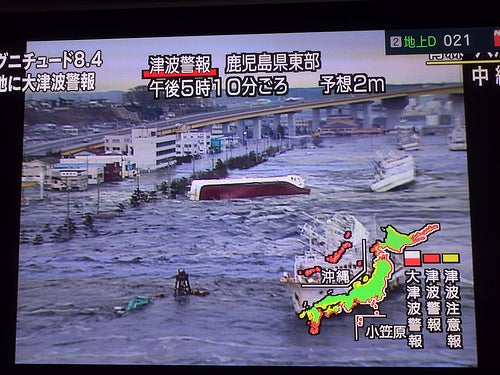
An 8.9 magnitude earthquake, the fifth largest on record, shook Japan at about 1 A.M. EST last night, according to the . City blocks tumbled to their foundations, small houses bobbed like apples in flooded streets, and the Japanese government evacuated nearly a thousand people from the vicinity of a nuclear reactor. Authorities believe the death toll could top 1,000 people.
The earthquake sent tsunamis rippling across the Pacific Ocean. Daybreak in Hawaii brought a series of mild, 7-foot waves to a harbor in Maui, but other areas of the Pacific Coast are expecting larger, potentially more destructive waves, according to .
The earthquake and its aftershocks occurred in an area known as a subduction zone. It's a place where one giant slab of rock that makes up part of the earth's crust slides under another giant slab of rock. In the area where this earthquake occurred, near Japan, the heavier oceanic Pacific Plate slides underneath the less dense Eurasian Plate at a rate of about 3 inches a year. Any frictional interruption of the sliding can cause an earthquake. If the plate moves enough due to this disruption, water is displaced and a tsunami can result.聽
–Will Grant